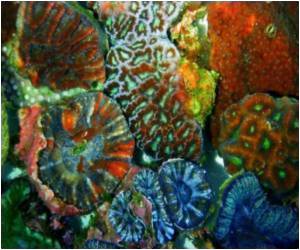The epic, ocean-spanning journeys travelled by millimetre-sized coral larvae through the world's seas were revealed by a new computer simulation.

Coral reefs are under increasing threat from the combined pressures of human activity, natural disturbances and climate change.
It has been suggested that coral may respond to these changing conditions by shifting to more favourable refuges, but their ability to do this will depend on the ocean currents.
"Dispersal is an extremely important process for corals. As they are attached to the seafloor as adults, the only way they can escape harmful conditions or replenish damaged reefs is by releasing their young to the mercy of the ocean currents," Sally Wood, a Ph.D. candidate at UB, said.
Where these intrepid explorers end up is therefore an important question for coral reef conservation.
However, tracking the movement of such tiny larvae in the vast oceans is an impossible task.
Advertisement
This larval migration model had been tested in a previous study against the reef-building coral Montastraea annularis in the Caribbean, where consensus between modeled estimates of genetic structure were found.
Advertisement
When considered over multiple generations, this means that corals are able to cross entire ocean basins, using islands and coastlines as "stepping stones."
The study is published in the journal Global Ecology and Biogeography.
Source-ANI









